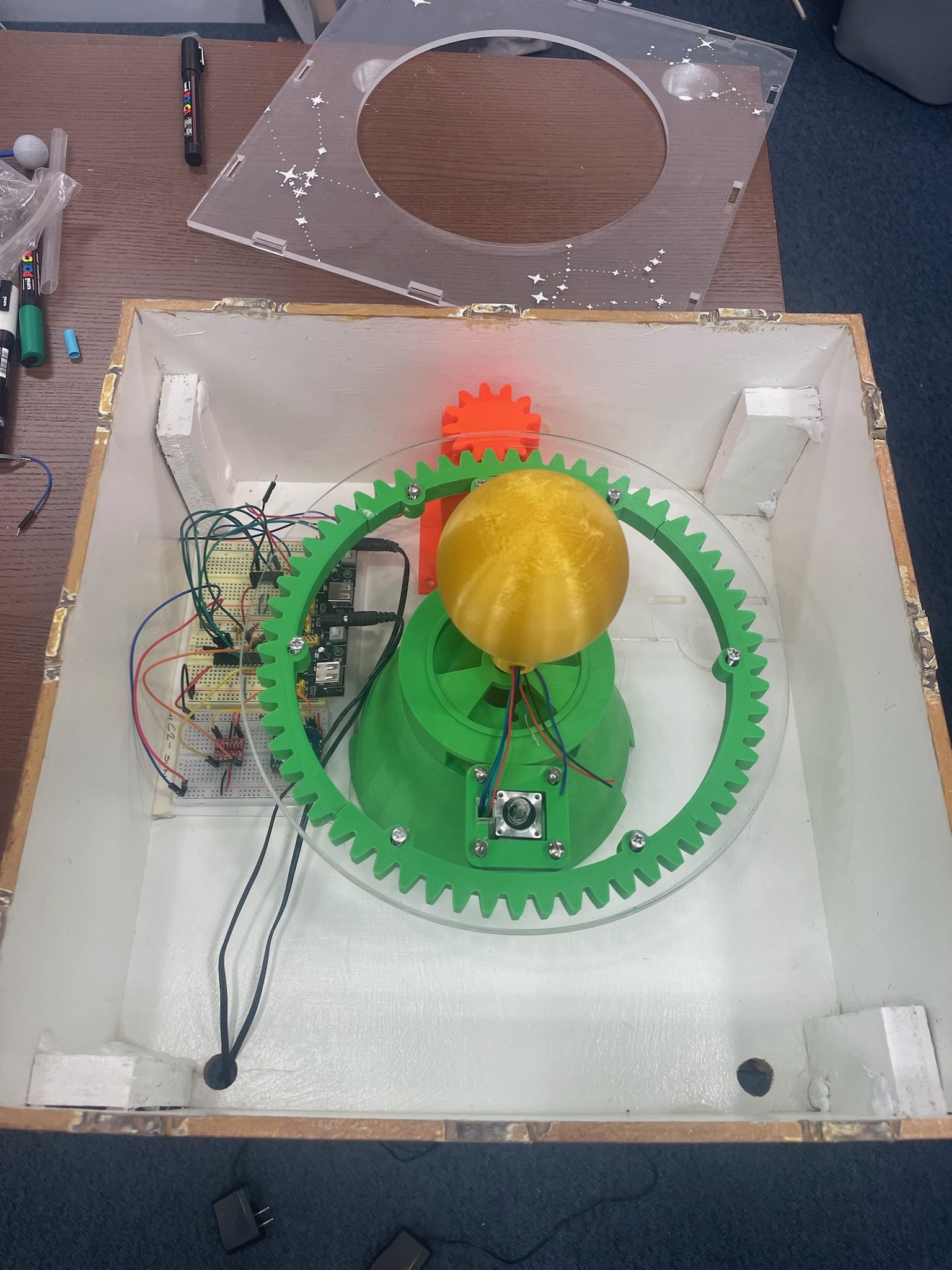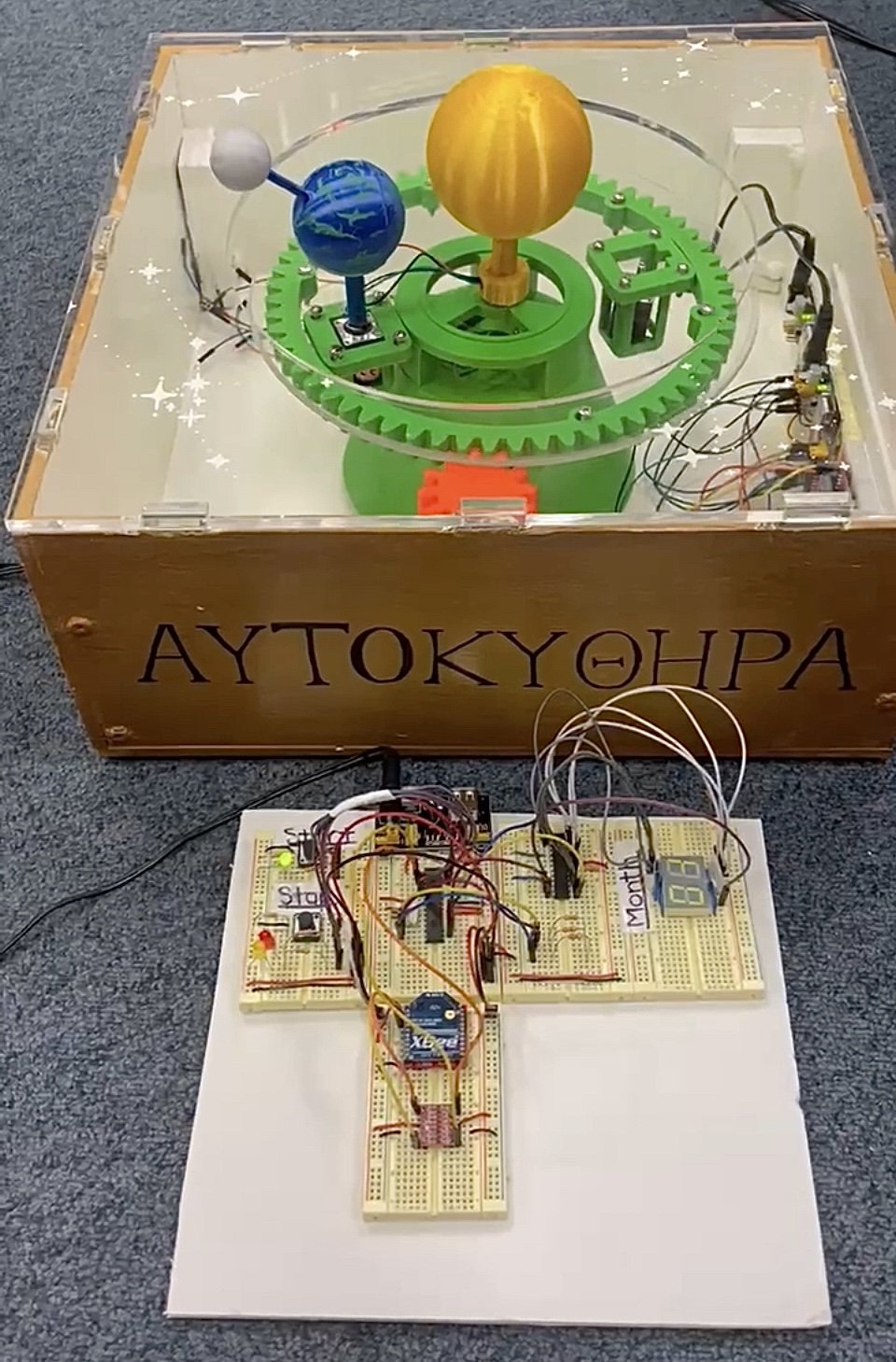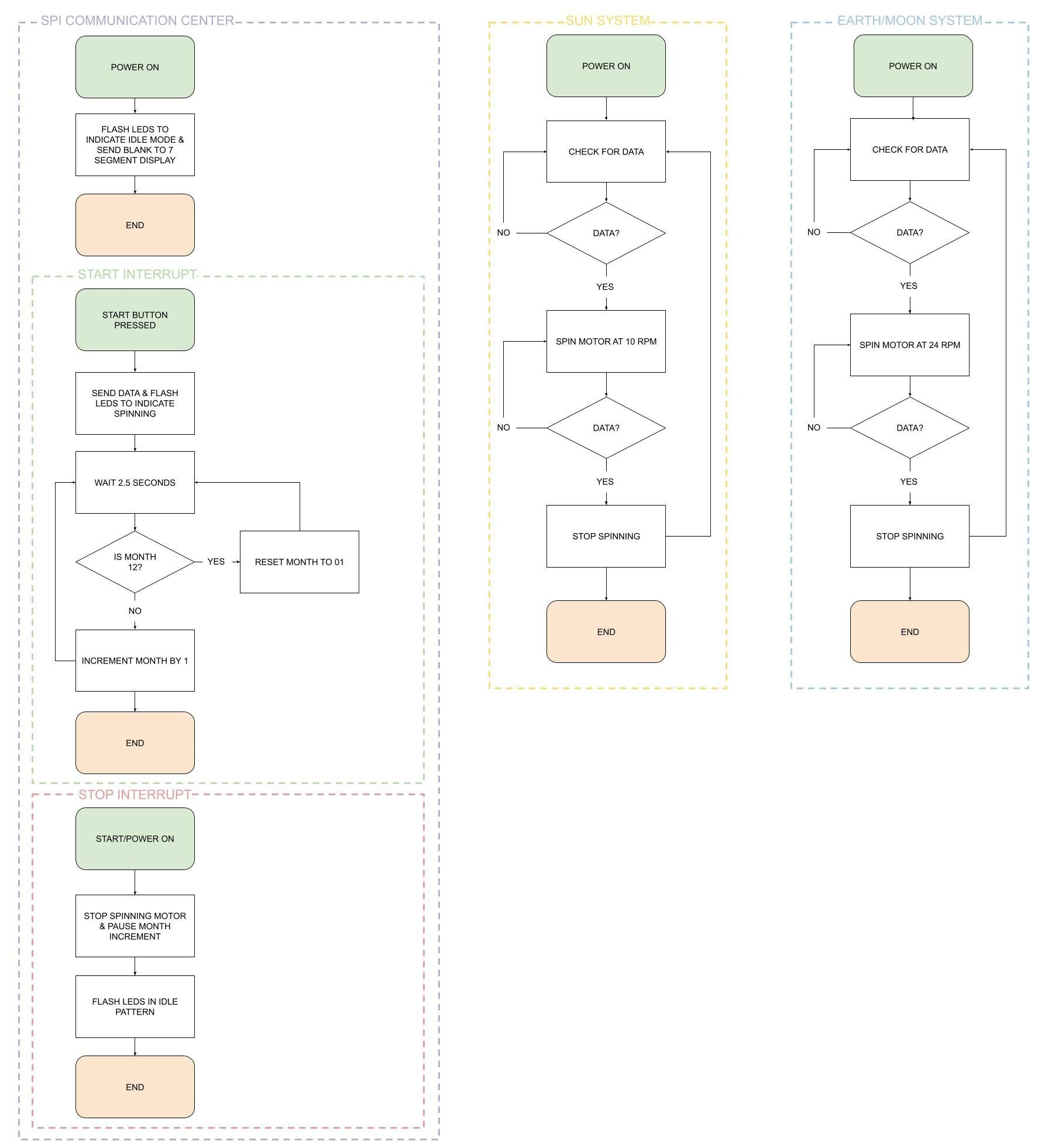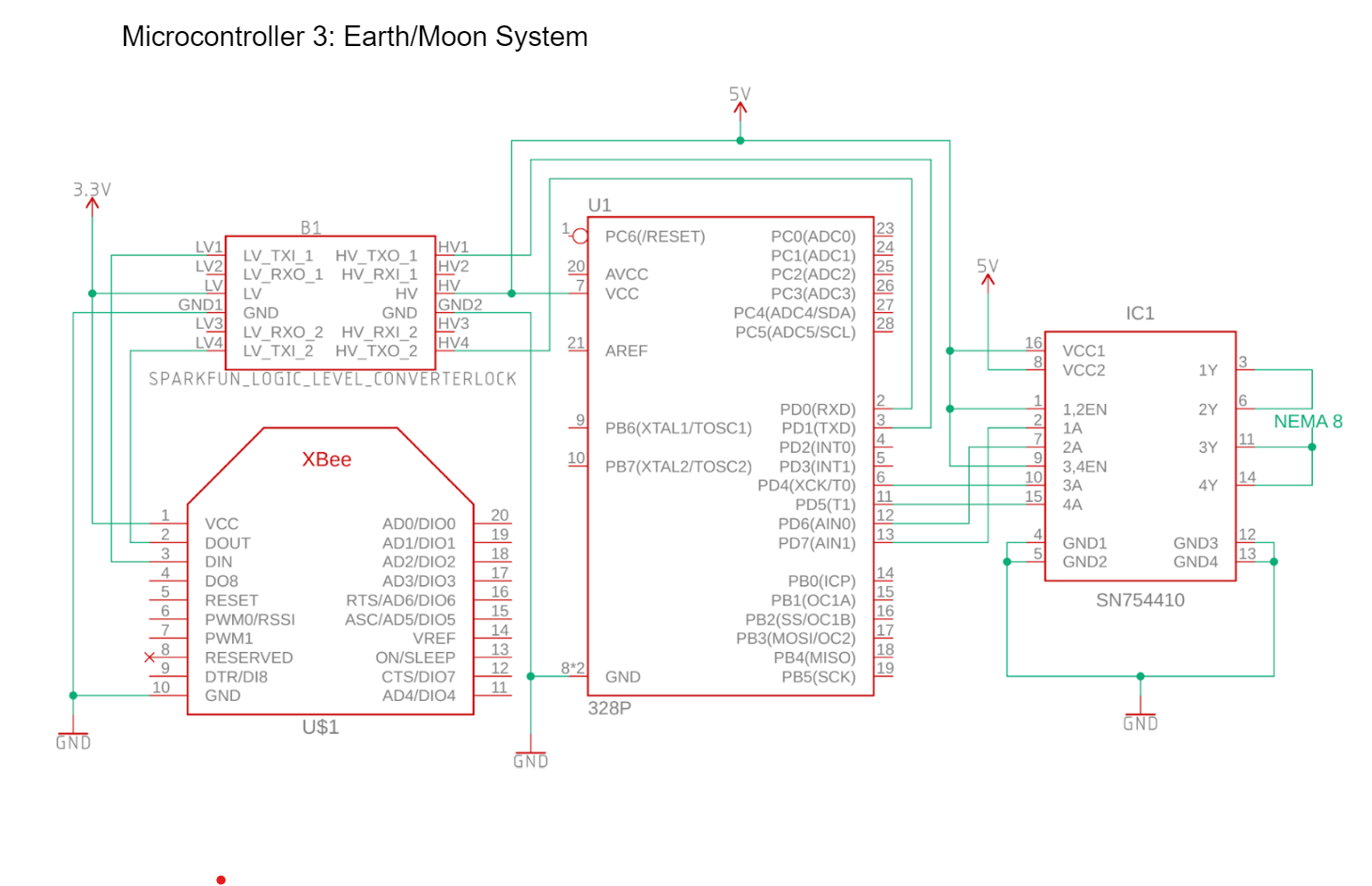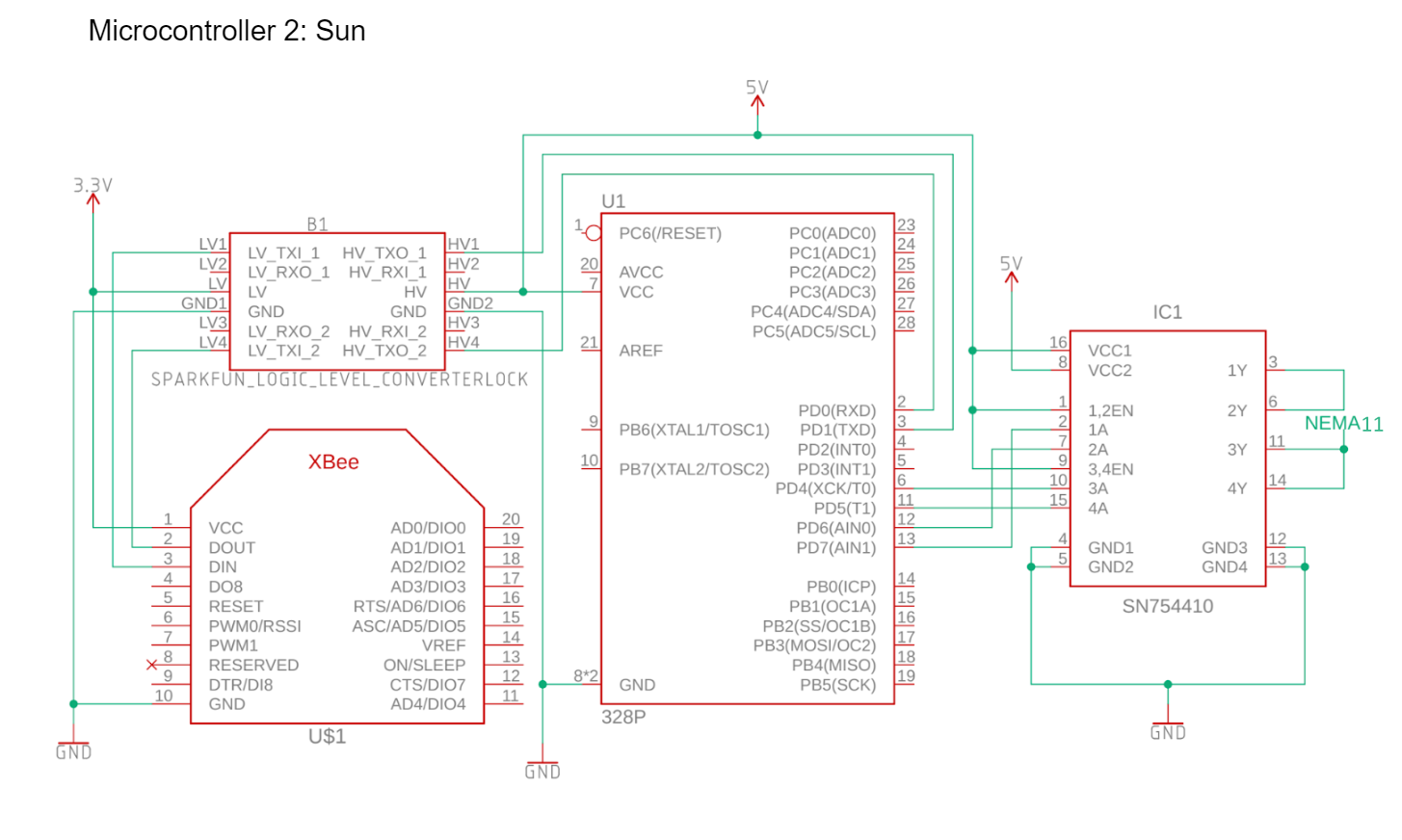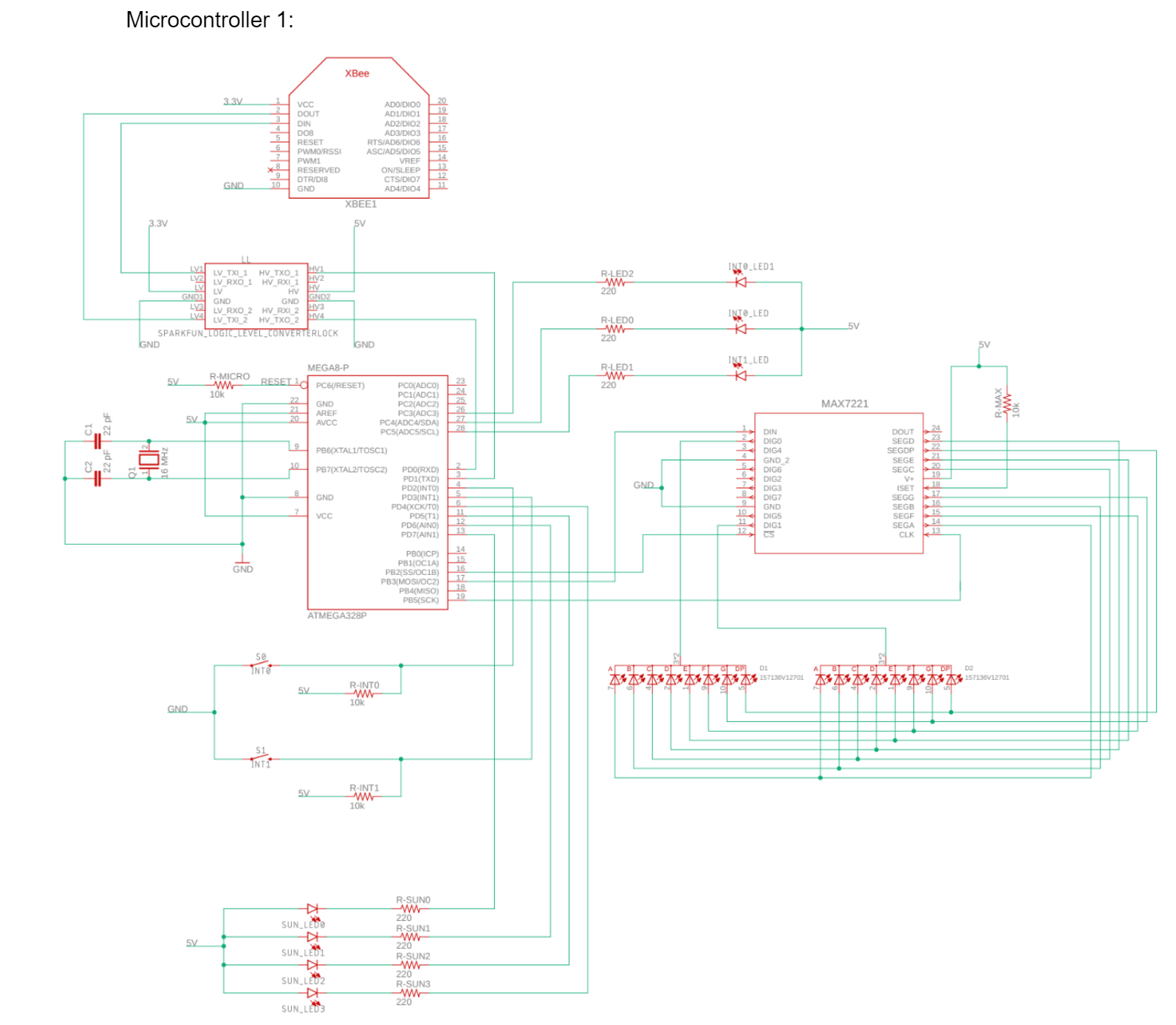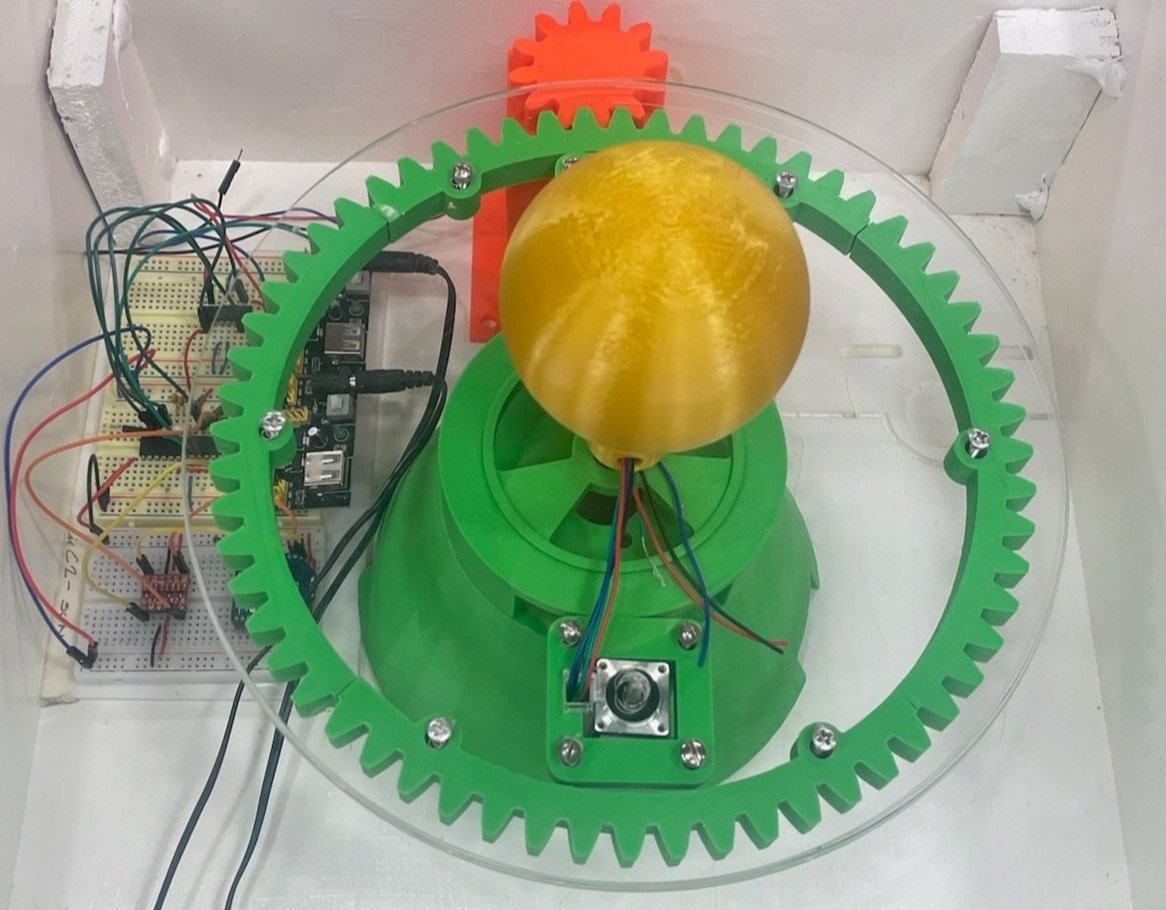
AUTOKYTHERA: Modernizing Celestial Mechanics with Mechtronic Innovation
The AUTOKYTHERA project was a collaborative effort for our Mechatronics course at Pitt. Our team included a bioengineer, a mechanical engineer, and myself. Together, we worked to bring this innovative project to life. Leveraging ATMega328P microcontrollers, we created a mechatronic simplified version of the Antikythera mechanism, an ancient Greek analog device designed to predict astronomical positions and eclipses. The original Antikythera mechanism, dating back to around 100 BCE, is often regarded as the world's first analog computer, capable of tracking the cycles of the solar system with remarkable precision.
I designed the AUTOKYTHERA mechanism in KeyCreator, meticulously creating digital models of each component. To bring these designs to life, I utilized 3D printers for precise and intricate parts, laser cutters for detailed shapes, and CNC machines for robust and accurate fabrication. Acrylic was used on the top faces to provide a clear view of the gear system, allowing users to observe the intricate workings of the device. This combination of advanced design software and modern manufacturing techniques ensured the creation of a highly accurate and functional mechatronic device.
In our project, we utilized ATMega328P microcontrollers to replicate the intricate gear movements of the original mechanism. Seven-segment displays were employed to visually represent the changing of months, providing an intuitive and modern interface for tracking time. Additionally, we integrated interrupt functionality, allowing users to pause the simulated movements of the sun, earth, and moon at any given moment. When the pause is disengaged, the system seamlessly resumes its operations, ensuring a dynamic and interactive experience. This blend of ancient ingenuity and modern microcontroller technology exemplifies the innovative spirit of mechatronics in bridging historical concepts with contemporary advancements.
Below, you will find photos of the CAD models, the fabrication process, the flowchart for the code, and the diagrams of the pinouts for the microcontrollers.





